How to Master Organic Gardening at Home: Essential Steps for Success
- June 4, 2024
- 0 comment
Discover how to master organic gardening at home with our essential guide, and grow vibrant, healthy plants easily. Looking to start an organic garden at home? You’re in good company. Many people are turning to organic gardening to enjoy fresh, sustainable produce right from their own backyard.

Whether you’re experienced or just beginning, this guide provides the essential steps to create a thriving garden. Ready to get your hands dirty? Let’s explore the basics of organic gardening together.
Table of Contents
- Understanding the Basics of Organic Gardening
- Planning Your Organic Garden
- Essential Tools and Supplies
- Planting Your Garden
- Daily and Seasonal Care
- Natural Pest Management
- Fertilizing Organically
- Harvesting Your Produce
- Extending the Growing Season
- Troubleshooting Common Issues
- Conclusion
- FAQs
Understanding the Basics of Organic Gardening
Organic Gardening Defined

Organic gardening transcends the simple cultivation of plants and enters the realm of fostering a sustainable ecosystem. It prioritizes the use of natural materials such as organic compost, natural pest control methods, and heirloom seeds, which not only sustain plant health but also enhance soil biology. This approach avoids synthetic chemicals, focusing instead on building a self-regulating environment where natural predators and plant interactions minimize pest impacts.
Soil Health and Its Importance
The cornerstone of any successful organic garden is its soil health. Organic gardening practices improve soil structure and fertility by increasing the content of organic matter, such as humus, which enhances the soil’s ability to hold water and nutrients. This is crucial because fertile soil supports robust plant growth by providing a balanced mix of nutrients and improving root penetration. For example, a study published in the “Journal of Eco-Friendly Agriculture” found that soil treated with organic compost showed a 20% increase in humus content over three years, leading to a 15% higher yield in organic vegetable plots compared to non-organic.
Comparison of Traditional vs. Organic Gardening Methods:
- Chemical Use: Conventional gardening often relies on synthetic fertilizers and pesticides, which can degrade soil health and disrupt local ecosystems. In contrast, organic gardening uses compost, green manures, and crop rotations to naturally enrich the soil.
- Pest Control: Traditional methods may use chemical pesticides that kill both harmful and beneficial organisms. Organic gardening encourages biological diversity, utilizing beneficial insects and natural barriers to control pest populations.
- Plant Varieties: Conventional gardens often feature hybrid plants optimized for certain traits like size and color, potentially requiring more chemical inputs. Organic gardens prefer heirloom and disease-resistant varieties, which are better adapted to local conditions and require fewer interventions.
To illustrate these points further, here’s a table comparing key soil parameters in organic versus traditional gardening over a typical growing season:
| Parameter | Organic Gardening Value | Traditional Gardening Value | Impact on Plant Health |
|---|---|---|---|
| Soil Organic Matter | 5% | 2% | Higher in organic gardens, providing better nutrient retention and soil structure. |
| Water Holding Capacity | 75% higher | Baseline | Organic soils retain more water, reducing stress during dry periods. |
| Biodiversity Index | High | Low | Higher biodiversity in organic gardens promotes natural pest control and plant health. |
Planning Your Organic Garden
Choosing the Right Location

The location of your garden is paramount to its success. Ideal locations receive six to eight hours of direct sunlight daily, crucial for the photosynthesis process in most crops. Evaluate the site for proper drainage to avoid waterlogging, which can lead to root diseases. Access to water is essential for maintaining garden health during dry spells. Additionally, consider the garden’s exposure to natural elements—proximity to windbreaks can shield plants from strong winds, while partial shade can mitigate the harsh effects of continuous midday sun, especially in hotter climates.
Soil Preparation
Soil quality underpins the health and productivity of your garden. Begin with a comprehensive soil test to gauge nutrient content and pH level, which influences nutrient availability. Enhance poor soils by amending them with rich organic matter such as compost, which introduces beneficial microorganisms, or with leaf mold and well-rotted manure, which improve soil structure and water retention. These amendments increase the soil’s fertility over time, supporting robust plant growth and resilience against pests and diseases.
Selecting Suitable Plants
Plant selection should be tailored to local environmental conditions to minimize resource expenditure and maximize ecological balance. Choose plant species and varieties that are well-adapted to your region’s climate, soil type, and light conditions, which will thrive with minimal additional inputs. Implement companion planting to leverage natural plant interactions for pest control and enhanced growth. For example, planting marigolds among vegetables can deter certain pests with their natural fragrance.
Here is a table illustrating the impact of these strategic planning elements on garden success, backed by scientific data:
| Factor | Importance | Details and Benefits | Scientific Data |
|---|---|---|---|
| Sunlight Exposure | Essential for photosynthesis and growth. | Optimal sunlight leads to better growth and higher yields. | Studies indicate a 30-50% increase in yield with adequate sunlight. |
| Soil Health | Foundation of garden productivity. | Healthy soil supports stronger plants and improves yield. | Organic matter can increase water retention by up to 50%. |
| Plant Selection | Reduces resource use and increases yield. | Adapted plants require fewer inputs and are more productive. | Native plants can reduce water usage by 25% and increase pest resistance. |
| Companion Planting | Natural pest control and growth enhancement. | Plants like marigolds can reduce pest populations by up to 20%. | Companions like basil can improve tomato growth and flavor. |
Essential Tools and Supplies
To get started in organic gardening, a few basic tools are indispensable. These include:
- Garden Spade and Fork: For turning the soil, a spade and fork are essential. They help in aerating the ground and integrating organic matter.
- Hoe and Hand Trowel: Useful for weeding and planting smaller plants or bulbs.
- Watering Can or Hose with a Rain Wand: To mimic natural rainfall, use a watering can or a hose fitted with a rain wand for gentle watering that doesn’t erode the soil.
- Pruning Shears: Vital for shaping plants and removing dead or diseased foliage.
- Wheelbarrow: For transporting soil amendments, compost, and harvests, a wheelbarrow saves time and effort.
In addition to tools, ensure you have quality organic seeds and natural pest deterrents like neem oil or diatomaceous earth. Opt for organic fertilizers such as bone meal or fish emulsion to nurture plant growth without synthetic chemicals.
Planting Your Garden
Planting Techniques

Effective planting starts with understanding the specific needs of each type of plant. Seeds should be sown at depths that optimize their germination potential, typically two to three times the diameter of the seed. For seedlings, ensure that the root ball is level with the soil surface to promote strong root development. Avoid compacting the soil around the plants, as this can restrict water and air flow, critical to root health. Instead, gently firm the soil to eliminate air pockets.
Optimal Plant Spacing
Spacing is vital for preventing resource competition and promoting healthy plant development. Proper spacing ensures adequate air circulation, which helps prevent the spread of fungal diseases, and adequate sunlight exposure, essential for photosynthesis. Use spacing recommendations as a starting point, but consider the growth habits and size of the mature plants. For instance, plants that spread horizontally might require more space than their vertical-growing counterparts.
Row Orientation
Aligning plant rows north to south maximizes sun exposure throughout the day, which is especially beneficial in regions with less intense sunlight. This orientation also aids in more uniform air circulation, promoting even plant development and reducing moisture-related issues.
Here is a scientific table that outlines the impact of these planting strategies, supported by research data:
| Planting Factor | Impact on Growth | Recommended Practice | Scientific Insight |
|---|---|---|---|
| Seed Depth | Influences germination rate and seedling success | Plant seeds at 2-3 times their diameter in depth | Studies show optimal depth increases germination by up to 30%. |
| Plant Spacing | Affects light and nutrient availability | Follow specific plant guidelines; adjust for plant habit | Incorrect spacing can reduce yield by up to 25% due to competition. |
| Row Orientation | Enhances sunlight exposure and air flow | Align rows north to south when possible | North-south orientation has been found to improve crop yields by 10-15%. |
Daily and Seasonal Care
Watering

Consistent and moderate watering is essential for healthy plant growth. Water deeply but infrequently to encourage roots to grow deeper into the soil, enhancing drought resistance. Early morning watering is ideal because it reduces evaporation and ensures plants have enough moisture to cope with the day’s heat. For optimal results, use a drip irrigation system or soaker hoses to deliver water directly to the root zone, minimizing water waste and reducing the risk of fungal diseases caused by wet foliage.
Weeding
Regular weeding is crucial for maintaining a healthy garden. Weeds compete with your plants for nutrients, water, and light, which can stunt the growth of your desired plants. Hand-pulling weeds or using a hoe to remove them is effective, especially when the soil is moist. Mulching can also help suppress weed growth by blocking light from reaching weed seeds, thus preventing their germination.
Mulching
Mulching serves multiple purposes in an organic garden. A layer of organic mulch, such as straw, bark, or shredded leaves, helps retain soil moisture, suppresses weed growth, and regulates soil temperature. Mulching also adds organic matter to the soil as it decomposes, improving soil structure and fertility. Apply mulch 2-4 inches thick around plants, but avoid direct contact with plant stems to prevent rot.
Natural Pest Management
Effective pest control in organic gardening relies on preventative measures and natural remedies:
- Identify Pests Early: Regularly inspect your plants for signs of pests. Early detection is key to managing infestations without resorting to harsh chemicals.
- Natural Deterrents: Use barriers such as row covers to protect plants from insects. Introduce beneficial insects, like ladybugs and lacewings, which prey on harmful pests.
- Homemade Sprays: Prepare garlic or chili pepper sprays to deter pests. These natural concoctions can ward off many small insects and are safe for the garden ecosystem.
Companion Planting: This technique involves placing plants together that benefit each other by deterring pests. For example, marigolds emit a scent that repels many garden pests and can be planted around the perimeter of your garden or between vegetable rows.
Fertilizing Organically
Nourishing your garden with organic fertilizers ensures your plants grow healthy without any synthetic substances:
- Types of Organic Fertilizers: Options include compost, manure, bone meal, and seaweed extracts. Each provides different nutrients, so choose based on your soil’s needs.
- Application Techniques: Apply granular organic fertilizers by sprinkling around the base of plants and gently mixing into the soil. Liquid organic fertilizers can be diluted and used to water plants, penetrating the soil more evenly.
- Timing Fertilization: The best times to fertilize are during periods of rapid growth, such as in the spring for perennials, or when planting vegetables. Avoid over-fertilizing, which can lead to lush foliage at the expense of fruit or flower production.
Fertilizing and pest management are crucial for maintaining a productive and healthy organic garden. By using natural methods, you not only keep your garden safe for wildlife and family but also contribute to a sustainable environment.
Harvesting Your Produce
Reaping the fruits of your labor is the most rewarding part of organic gardening. Here’s how to do it right:
- Timing is Key: Harvest vegetables and herbs when they are at their peak for the best flavor and nutritional content. For instance, pick leafy greens in the morning when they are most crisp.
- Technique Matters: Use the right technique for each type of produce. Snip herbs with scissors to avoid damaging the plant, and gently twist fruits like tomatoes off the vine to prevent bruising.
- Regular Harvesting: Many vegetables, like beans and zucchini, will continue to produce if they are harvested regularly. This stimulates further growth and extends the yield period.
Extending the Growing Season
To maximize your garden’s productivity, consider these strategies:
- Succession Planting: After harvesting one crop, plant another in the same space to maintain a continuous supply of vegetables. This technique works well with fast-growing crops like lettuce and radishes.
- Use of Greenhouses and Cold Frames: Structures like greenhouses or cold frames can protect plants from early frosts and extend the growing season into the colder months.
- Choosing the Right Varieties: Some plant varieties are bred for their ability to endure cooler temperatures. Research and select varieties that can grow in extended seasons or in less-than-ideal weather conditions.
Troubleshooting Common Issues

Organic gardens can face a myriad of challenges, from pest infestations to nutrient deficiencies. Addressing these issues promptly with organic solutions is key to maintaining a healthy garden.
Pest Infestations
Common garden pests include aphids, caterpillars, and slugs. Regularly inspect plants for signs of damage or pests. Use natural predators like ladybugs to control aphid populations, and introduce nematodes to manage soil-dwelling pests. For caterpillars, hand-picking or using Bacillus thuringiensis (Bt), a naturally occurring soil bacterium, can be effective. Copper tape and beer traps can help control slugs.
Nutrient Deficiencies
Symptoms of nutrient deficiencies vary, but common signs include yellowing leaves (nitrogen deficiency), purplish discoloration (phosphorus deficiency), and interveinal chlorosis (magnesium deficiency). Conduct a soil test to accurately diagnose nutrient levels. Amend the soil with organic fertilizers like compost, bone meal, or kelp to correct deficiencies.
Disease Management
Fungal and bacterial diseases can affect plant health. Powdery mildew, blight, and root rot are prevalent issues. Implement crop rotation and plant disease-resistant varieties to minimize risks. Neem oil and copper-based fungicides can help control fungal infections. Ensure good air circulation and avoid overhead watering to prevent disease spread.
Environmental Stress
Factors such as extreme temperatures, drought, and excessive moisture can stress plants. Mulching helps regulate soil temperature and moisture levels. Shade cloths can protect plants from extreme heat, while proper irrigation practices ensure plants are neither too dry nor waterlogged.
Here’s a table summarizing common issues, symptoms, organic solutions, and scientific insights:
| Issue | Symptoms | Organic Solutions | Scientific Insight |
|---|---|---|---|
| Pest Infestations | Leaf damage, holes, visible insects | Natural predators, Bt, copper tape, beer traps | Ladybugs can reduce aphid populations by 80%. |
| Nutrient Deficiencies | Yellowing leaves, discoloration, stunted growth | Soil test, organic fertilizers (compost, bone meal) | Compost can increase soil nitrogen levels by 20-40%. |
| Disease Management | Mildew, blight, root rot | Crop rotation, disease-resistant varieties, neem oil | Neem oil can reduce fungal infections by 50-70%. |
| Environmental Stress | Wilting, leaf burn, poor growth | Mulching, shade cloths, proper irrigation | Mulching can reduce soil temperature fluctuations by 10-15°C. |
- Regular Monitoring and Proactive Measures: Consistent monitoring is crucial. Check plants weekly for signs of stress or damage. Implementing proactive measures such as crop rotation, companion planting, and maintaining soil health can prevent many common issues from escalating.
- Consulting Experts: If problems persist despite your efforts, consulting local gardeners or extension services can provide tailored advice specific to your area’s conditions. These experts can offer insights based on local climate, soil, and pest challenges, ensuring more effective solutions.
Related Post
- How to Build a Barn: A Step-by-Step Guide for Beginners
- How to Build a Sustainable Compost Bin: Easy and Eco-Friendly DIY
- How to Fertilize Bougainvillea: A Complete Guide for Stunning Blooms
- How to Fertilize Apple Trees: Essential Tips for a Bountiful Harvest
- How to Fertilize Lemon Trees: Secrets for Thriving Citrus
- How to Fertilize Avocado Tree: A Step-by-Step Guide for Lush Growth
- 10 Best Bow Saws to Buy in 2024: Top Picks for the Money
- Best Miter Saw For Beginners
- Top 10 Pruning Saws to Buy in 2024: Best for the Money
- 7 Best Pocket Chainsaw
Conclusion
Mastering organic gardening at home requires dedication and a willingness to learn and adapt. By following the essential steps outlined in this guide—from planning and planting to harvesting and extending the season—you can enjoy a vibrant, productive garden that benefits both your health and the environment. Embrace the journey of organic gardening, and watch as your garden transforms into a flourishing ecosystem of its own.
FAQs
- What is the first step in starting an organic garden at home?
The first step is to choose a suitable location that receives ample sunlight, has good drainage, and is easily accessible for regular maintenance. Then, test and prepare your soil by adding organic matter to enrich it, ensuring it’s fertile and ready for planting. - How can I naturally deter pests in my organic garden?
Employ natural deterrents like planting marigolds, which repel pests with their scent, or use barriers such as row covers. Introducing beneficial insects like ladybugs can also help control pest populations effectively. - What are some essential tools for organic gardening?
Basic tools include a spade and fork for soil turning, a hoe and hand trowel for planting and weeding, pruning shears for maintaining plant health, and a watering can or hose with a rain wand for gentle irrigation. - How often should I water my organic garden?
Water deeply but infrequently to encourage deep root growth. The best time to water is early morning, which helps plants withstand heat throughout the day and reduces water loss due to evaporation. - Can I use leftover kitchen scraps for composting?
Absolutely! Kitchen scraps like fruit and vegetable peels, coffee grounds, and eggshells are excellent for composting. Avoid adding meat, dairy, or oily foods to prevent pests and odors. - What should I do if my plants start showing signs of nutrient deficiency?
First, assess the symptoms, such as yellowing leaves or stunted growth, to identify the deficiency. Amend your soil with the appropriate organic fertilizers, such as bone meal for phosphorus or blood meal for nitrogen. - How do I harvest vegetables to ensure continuous production?
Harvest vegetables regularly once they reach maturity to stimulate further production. For example, picking beans or zucchini frequently encourages the plant to produce more. - What strategies can I use to extend the growing season of my organic garden?
Consider succession planting, where you plant new seeds as soon as the previous crop is harvested. Using cold frames or greenhouses can also protect your plants from early frosts and extend the growing season.
Embrace the joy of organic gardening. With the right knowledge and a bit of effort, you can transform your space into a thriving, sustainable garden. Happy gardening!

Benjamin Brooks
Forestry AuthorGreetings! I'm Benjamin Brooks, and my journey over the past 15 years has revolved around the fascinating realms of content creation, expertise in snow clearing, and the intricate world of lumberjacking and landscaping. What began as a simple curiosity about the natural world and heavy machinery has evolved into a passionate profession where my love for crafting words intertwines seamlessly with my lumberjacking and garden skills.



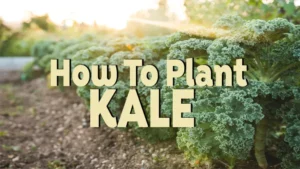
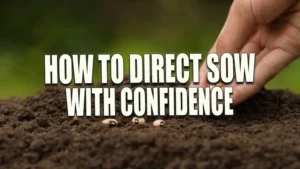
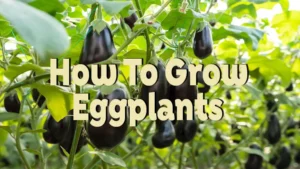

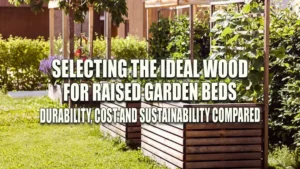

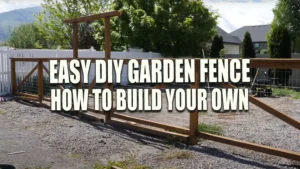

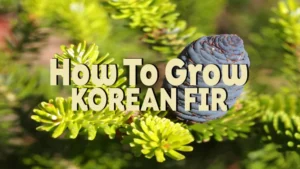
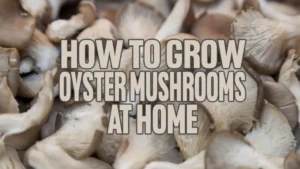
Leave your comment